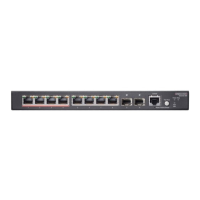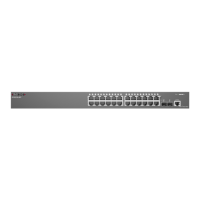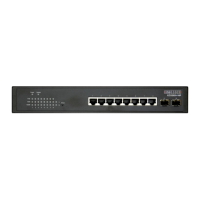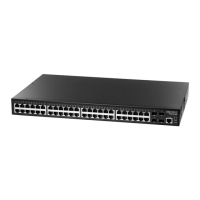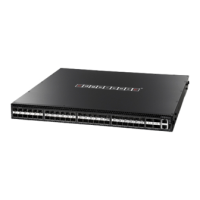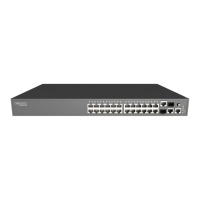Chapter 22
| Quality of Service Commands
– 534 –
CoS value. Note that a class map can include match settings for both IP values
and a VLAN.
3.
Use the policy-map command to designate a policy name for a specific manner
in which ingress traffic will be handled, and enter the Policy Map configuration
mode.
4.
Use the class command to identify the class map, and enter Policy Map Class
configuration mode. A policy map can contain up to 16 class maps.
5.
Use the
set cos command to modify the per-hop behavior, the class of service
value in the VLAN tag for the matching traffic class, and use one of the
police
commands
to monitor parameters such as the average flow and burst rate, and
drop any traffic that exceeds the specified rate, or just reduce the DSCP service
level for traffic exceeding the specified rate.
6.
Use the service-policy command to assign a policy map to a specific interface.
Note:
Create a Class Map before creating a Policy Map.
class-map
This command creates a class map used for matching packets to the specified class,
and enters Class Map configuration mode. Use the
no
form to delete a class map.
Syntax
[
no
]
class-map
class-map-name
class-map-name - Name of the class map. (Range: 1-32 characters)
Default Setting
match-any
Command Mode
Global Configuration
Command Usage
◆
First enter this command to designate a class map and enter the Class Map
configuration mode. Then use match commands to specify the criteria for
ingress traffic that will be classified under this class map.
◆
One or more class maps can be assigned to a policy map (page 537). The policy
map is then bound by a service policy to an interface (page 541). A service
policy defines packet classification, service tagging, and bandwidth policing.
Once a policy map has been bound to an interface, no additional class maps
may be added to the policy map, nor any changes made to the assigned class
maps with the match or
set
commands.

